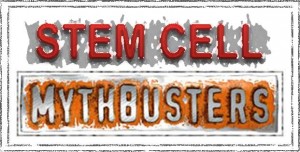Mythbusters: Injecting Stem Cells IV Means Only 0.0005% Reach their Target in the Brain…
As I have blogged before, many stem cell treatment centers around the world inject stem cells IV. This makes sense, as it’s a very simple procedure with very few complications. However, a bevy of recent studies have questioned the efficacy of this approach. The problem is the “pulmonary first pass effect” which means that when adult stem cells are injected IV, about 95% get trapped in the lungs. A recent study looked at how many actually ended up in the brain when injected IV. Turns out a paltry 0.0005% or about 5 cells out of 1,000,000 injected ended up in the brain. Here’s how it broke down. 48 hours after the IV injection of mesenchymal stem cells:
-Between 1.5 and 3.7% of the infused cells made it past the lungs
-0.295% of the cells made it to the carotid artery
– 0.0005% made it past the blood brain barrier and ended up in brain tissue
What does this mean? It means that if you injected 100 million mesenchymal stem cells IV (a higher end dose), only 500 would end up in the brain. Is this a lot of cells in the brain? No, it’s so far below what the experimental models show would likely cause brain repair as to be insignificant. As an example, 100 million MSC’s if stored in a semisolid state would be about the size of a pea. 500 MSC’s would be much much smaller than the head of the sharpest pin imaginable.
The upshot? Real adult stem cell treatments aimed at treating a target tissue (like the brain) involve local delivery to the area. While IV treatments may work for things like lung disease or general anti-aging, for fixing a specific damaged tissue this is not a viable treatment method. It’s also important to note that other types of stem cells (outside of adult mesenchymal or heamtopoetic stem cells) may or may not suffer from this problem. For examples, VSEL’s are known to be very small and they may escape this first pass effect in the lungs.

NOTE: This blog post provides general information to help the reader better understand regenerative medicine, musculoskeletal health, and related subjects. All content provided in this blog, website, or any linked materials, including text, graphics, images, patient profiles, outcomes, and information, are not intended and should not be considered or used as a substitute for medical advice, diagnosis, or treatment. Please always consult with a professional and certified healthcare provider to discuss if a treatment is right for you.

